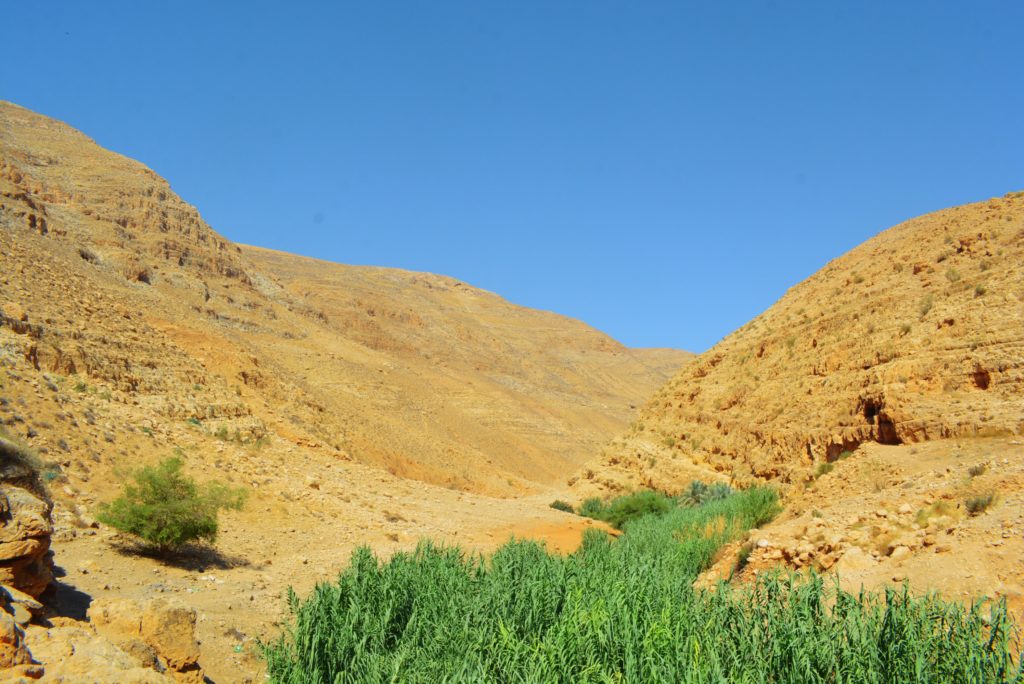Aquifers are of tremendous importance for the MENA as world’s most water-stressed countries are located in the region, including Kuwait, Qatar, UAE, Palestine, Saudi Arabia, Oman, Iran, Lebanon and Yemen. However, aquifers in MENA are coming under increasing strain and are in real danger of extinction. Eight aquifers systems, including those in MENA, are categorized as ‘over stressed’ aquifers with hardly any natural recharge to offset the water consumed.

Aquifers in MENA
Aquifers stretched beneath Saudi Arabia and Yemen ranks first among ‘overstressed’ aquifers followed by Indus Basin of northwestern India-Pakistan and then by Murzuk-Djado Basin in North Africa. The Nubian Sandstone Aquifer in the Eastern end of Sahara deserts (parts of Sudan, Chad, Libya and most of Egypt) is the world’s largest known ‘fossil’ aquifer system and Bas Sahara basin (most of Algeria-Tunisian Sahara, Morocco and Libya) encloses whole of the Grand Erg Oriental.
The non-renewable aquifers in the Middle East are the Arabian Aquifer and The Mountain Aquifer between Israel and Palestine. Some parts in MENA like Egypt and Iraq rely on major rivers (Nile, Tigris and Euphrates) but these surface water flows does not reach the ocean now. Needless to say, water demand in arid and dry MENA countries is met primarily by aquifers and seawater desalination.
MENA region is the most water-scarce region of the world. The region is home to 6.3 percent of world’s population but has access to measly 1.4 percent of the world’s renewable fresh water. The average water availability per person in other geographical regions is about 7,000 m3/year, whereas water availability is merely 1,200 m3/person/year in the MENA region. The region has the highest per capita rates of freshwater extraction in the world (804 m3/year) and currently exploits over 75 percent of its renewable water resources.
Primarily global exploitation of groundwater is for agricultural irrigation. In Saudi Arabia, during 1970’s, landowners were given free subsidies to pump the aquifers for improvisation of agricultural sectors. Soon the country turned out to be world’s premium wheat exporters.
But as years passed, water consumption was high in such a rate that the aquifers approached total depletion. Government announced peoples demand to be met by desalination, which is an expensive approach to meet agricultural sector requirement. By end of 1990’s agricultural land declined to less than half of the country’s farm land.
Saudi Arabia is no more a wheat exporter rather relies almost entirely on imported crop from other countries. Unfortunately, country has exploited nonrenewable and ancient ‘fossil’ aquifers which could not be recharged by any form of precipitation.
Key Issues to Tackle
Stress on a country’s agricultural and water resources majorly cause problems in human health as well as instability and conflicts over shared resources. Climate change has also exacerbated water availability in the Middle East. Infact, water stresses has triggered brutal civil war in Syria and worsened the Palestine-Israel conflicts over sharing aquifers. The key issues, according to World Bank, in water utilization in MENA are as follows:
- Unsustainable and inefficient use: Middle East countries have the highest per capita consumption of domestic water in the world with 40-50% leakage in the urban systems. And 50% water withdrawn for agriculture does not reach as intended.
- Ineffective policies: the countries diverts 85% of water to grow crops which would be better importing.
- Deteriorating water quality: contaminated water systems due to insufficient sanitation infrastructure has caused negative impacts on environment and health issues. Like, in Iran where issues associated with inadequate waste water collection and treatment cost estimated 2.2% of GDP.
- Excessive reliance on the public investment on water accounts for 1-5 percent of GDP.
In MENA an unexpected climate change is likely to bring 20% rainfall reduction and high rate of evaporation which intensifies water stress. And proportionate climate initiated human behavior, more it gets dry, less water in the river, more tendencies to substitute by groundwater. Also depletion of water below the ground will rise to other disasters like sea water intrusion, land subsidence, especially in Arabian Peninsula, in turn destroys the constructions, infrastructures and developments of the country made-up till date.
How to Save the Aquifers?
We do not know how much water is remaining beneath, but we must understand it is vanishing at a very high rate. MENA must treasure aquifers and natural water resources as same as oil reserves are valued. Individual can play a significant role in saving aquifers in MENA by adopting these simple water conservation guidelines:
- Do not drain cooking oil or grease into sink; use adequate amount, reuse like as a shovel cleaner, polish or donate to machinery shops.
- Effective use of tap; do not run water while brushing. During winters, store the initial cold water that runs out of the tap prior to the hot water from heater. And also know the convenient tap adjustments.
- Maintain healthy, hygienic and sanitation practices.
- Replace conventional water pumps and home appliances with advanced water conservation ones.
- Avoid unnecessary products, food materials and reduce wastage; water consumed in a diet account’s 92% of water footprint of an individual.
- Avoid sprinklers for irrigation and in garden use to avoid water loss by evaporation and substitute with efficient water distribution system.
By nature, water is definite in this ‘blue planet’. But when there is no right quantity of water at right quality and time it is called ‘Crisis’.
This article was originally published in EcoMENA on July 23, 2020. EcoMENA is an AMWAJ media partner.